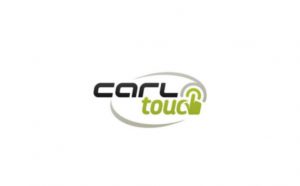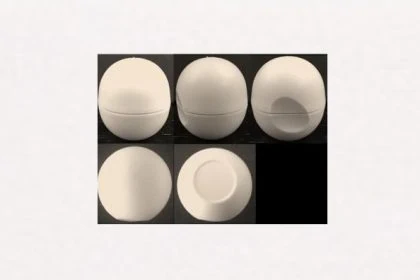Does ‘Carl’ as a first name have little distinctiveness – or because it is part of famous brands like Carl Benz or Carl Zeiss? An interesting ruling of the CFI, especially since a word mark generally has a stronger scope of protection than a word/figurative mark.

In general, a word/figurative mark (like a classic company logo) has a less strong scope of protection than an identical word mark. This is because a figurative mark is only protected in the same way as it is applied for, and that is precisely the combination of the word element and the figurative representation. The protection for a word mark, on the other hand, applies regardless of its design, even if it is written in upper or lower case. It is therefore always advisable to protect a word mark (also possible in addition to a word/figurative mark or figurative mark), even if a company logo is actually to be protected.
In such a case, the European Court of First Instance (CFI, EU:T:2020:544) has now dealt with the likelihood of confusion between a word/figurative mark and a word mark, both with the word element ‘Carl’. Before the CFI the finding of similarity was therefore clarified and the distinctiveness of the word ‘Carl’ was discussed – which is also a well-known first name.
The facts
The applicant, Topcart GmbH (Germany), applied for registration of the term ‘TC CARL’ as a word mark in 2016. The goods and services for which registration was sought were mainly in the field of software and printers.
The intervener, Carl International (France), filed a notice of opposition and relied on its earlier figurative mark ‘Carl Touch’. According to the applicant, there was a likelihood of confusion between the marks, particularly since both marks were registered for similar and even identical goods and services.
The opposition was upheld by both the Opposition Division and the Board of Appeal. Topcart, the applicant for the trade mark, refused to accept this decision and brought its objections before the European Court of First Instance. The applicant claimed that there were differences between the marks and challenged the decision on the likelihood of confusion, in particular because the first name ‘Carl’ was not very distinctive and because the word element ‘touch’ and, in particular, its graphic presentation was clearly visible in the earlier word and figurative mark.
Likelihood of confusion requires minimum degree of similarity
The CFI first recalled the lesser known fact that a likelihood of confusion can only be found if there is a minimum degree of similarity between the conflicting signs, regardless of the degree of similarity of the goods and services and the degree of distinctiveness of the earlier mark.
Therefore, the Court of First Instance added that the visual, aural or conceptual similarity of the marks in question must be assessed by reference to the overall impression given by them, as it did in respect of the marks at issue.
‘Carl’ as a first name only slightly distinctive?
An important aspect was the word element ‘Carl’, since this element is present in both marks. Did ‘Carl’ as a first name have a weak distinctive character or – in contrast – was it dominant in the marks at issue? Neither, the CFI ruled.
While it is true that the case-law states that first names are less distinctive than surnames, the CFI made it clear that this only applies to word signs composed of a person’s first name and surname. However, since in the present case only a first name is part of the trade marks, this case-law is not relevant here.
Nor does the fact that ‘Carl’ is a protected word element in the EU (just think of the international companies Carl Benz or Carl Zeiss) alter its distinctiveness, the Court explained. The appellant, who has the burden of proof, has not shown that the word element ‘Carl’ has any particular meaning in relation to the goods in question or any particular connection with them, or that it is commonly used in the sector concerned.
The Court therefore held that the word element ‘Carl’ had normal intrinsic distinctive character.
Word element in principle more distinctive than the figurative element
The similarity between the two marks as regards the word element ‘Carl’ is not offset either by the ‘tc’ of the word mark or by the ‘touch’ element of the word/figurative mark, the Court added.
Although the ‘touch’ element of the word/figurative mark is even graphically striking because of the raised hand at the end of the word, that element has only a very weak distinctive character, since the graphics are associated with touch screen technology. Furthermore, the stylisation of the word element ‘carl’ and its frame is perceived merely as decoration, the Court held. In this context, the CFI referred to the settled case-law on a trade mark composed of word and figurative elements, according to which the word element is in principle more distinctive than the figurative element.
As regards the word mark, the CFI found that the two elements ‘tc’ and ‘carl’ each have an independent distinctive role in that mark, neither of them being more dominant than the other.
Visual and phonetic similarity
The Board of Appeal was therefore right to find that the conflicting marks were at least visually and phonetically similar in a normal way. Conceptual similarity is also marked by the word “Carl”, the Court added, but this is limited, in particular because of the importance which could be attributed to the element “touch”. Despite its relatively weak distinctive character, the element ‘touch’ is not negligible in the overall impression created by the earlier mark, but this doesn’t change the fact of likelihood of confusion.
Proprietor of the earlier word/figurative mark won
Finally, the CFI dismissed the action in its entirety and confirmed the likelihood of confusion between the earlier word and figurative mark and the later word mark. The proprietor of the earlier word/figurative mark won.
Would you also like to protect your trademark or brand?
Our lawyers are experienced in trademark and patent law, national and international law.

Sources (both text and image):
Judgement of CJEU/CFI: word/figurative mark ‘carl’, EU:T:2020:544







Leave a Reply